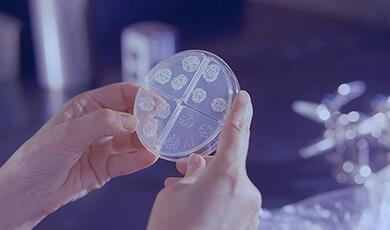Infections That Use Touch to Transmit
Share
- Details
- Text
- Audio
- Downloads
- Extra Reading
Some diseases are spread almost exclusively by touch or through the skin or mucus membranes. These include Ebola, several parasitic diseases such as hookworm, strongyloides and scabies and some bacterial and fungal infections. Other diseases like COVID-19 and influenza are mainly transmitted via other routes but use touch as a secondary method of spread. This has implications for controlling these diseases, including the role of isolation and sanitation.
Download Text
Infections Transmitted by Touch
Professor Chris Whitty
23rd March 2022
This talk is part of a series on the five main routes of transmission by which infections get into the human body. The central point of the series is that for most infections there is either one route of transmission, or one dominant route and some secondary routes. Understanding the route of transmission helps to explain how diseases spread, and how to combat them. These notes are not a transcript of the lecture, but an indication of the topics covered in more detail in the lecture.
It is intuitive that infections can be passed on by touch, but it is actually harder than you might think. The skin is tough, difficult to penetrate and well defended immunologically. Additionally, there are strong cultural norms not to touch strangers outside family and close friends. Touch is important for affection and reassurance. Touch diseases are spread relatively easily within families and within settings where it is normal for people to touch non-family members. These include children, for example at school; contact sport; very close social contacts; social greeting such as handshakes and importantly in healthcare where touch is used both therapeutically and to reassure.
There are several ways infections are passed principally by touch. These include skin-to-skin infections like viral warts; hospital-acquired infections; diseases passed on by touch to mucous membranes such as the mouth and eyes; touching sand, soil or water, and diseases which are passed on through puncture of the skin. Although infections transmitted by touch are passed on directly or indirectly by the skin, they can affect every organ of the body, such as the gut or nerves. They include some of the most feared multisystem diseases of humans such as Ebola. On the other hand, some major infections affecting the skin, such as leprosy, are transmitted by other routes.
Several infections have evolved to specialise in being transmitted by skin-to-skin contact. The first to consider are viruses. Examples of these include warts of the hands and feet, or the viral skin disease, molluscum contagiosum. Parasites passed on person-to-person by touch include scabies, a mite that burrows into the skin, or head lice (nits). Fungal infections of the skin passed on person-to-person include ringworm and athlete’s foot.
Several bacterial infections are passed person-to-person by touch include impetigo, a common infection in younger children. The skin is normally covered with bacterial infections, with significant exchange between people who touch one another. Sometimes these can get through the skin either through breaks in the skin, such as scratches or athlete’s foot causing infection such as cellulitis, or through hair follicles and sweat pores which allow boils or abscesses to form.
One of the most important bacteria passed on by touch is Staphylococcus aureus. If this gets into the body from the skin, it can cause abscesses in many organs including the lungs and brain, heart valve infection and infections in bones and joints.
Hospitals are high-risk environments for touch diseases. Touching strangers is part of the process of medicine, nursing and other therapies. Intravenous lines and drips are potentially an easy way for bacteria to get through the skin and into the blood. Widespread use of antibiotics means that drug resistant organisms are common in hospitals. Reducing the risk of touch infections in hospitals requires basic hygiene and this can be extremely effective. MRSA is an example of a bacterial infection which was substantially reduced in the UK by hand washing in healthcare settings. Skin contaminants from medical staff during procedures is still very common and remains a risk. Historically, reductions in hospital-acquired touch infections were the result of surgical and medical pioneers, such as Ignaz Semmelweis and Joseph Lister, challenging deeply entrenched views. Basic hand hygiene, then anti-sepsis systems, and finally modern surgery, which has moved to asepsis have substantially reduced the risk of bacterial infections acquired during hospital stays.
The infections we have talked about so far are where touch is the principal or only route of transmission. It is also a major secondary route for infections transmitted by several other routes including respiratory and oral route. An example is COVID-19. For this reason, the importance of hand washing extends well beyond touch.
An example of the most severe end of touch transmitted diseases are the viral haemorrhagic fevers Lassa, Ebola and Marburg. These are passed on by direct contact with people or their bodily fluids, usually involving touching mucous membranes. In an epidemic, this can be a very efficient route of transmission , as demonstrated by the West African epidemic of Ebola starting in 2014. This is a very serious disease, with a mortality of over 65%, which spread rapidly due to transmission in healthcare settings, during funerals and in the community. Reducing touch from infected people in each of the settings was key to reversing the epidemic.
Some infections are transmitted by humans touching animals. They range from usually mild diseases, such as Orf acquired from goats and other animals, through to significant diseases such as anthrax of the skin. Some of these are medically important including cowpox, a viral infection largely passed on when hand milking cows which is the origin of vaccination against smallpox.
Some human parasites have evolved to specialise in transmission by humans touching soil, sand, mud or swimming in freshwater. These include hookworms which are passed on through touching soil, jigger fleas which mainly affect the feet from walking on sand, and schistosomiasis which is acquired through swimming in water where the parasites penetrate the skin.
Fungal infections, which cause serious medical problems, are transmitted by touching soil plants. Which ones are important depends on the local geography.
Two infections of considerable importance and high mortality rely on puncturing the skin- tetanus and rabies. For tetanus, agriculture, war, childbirth and unclean surgery in non-sterile settings are common risks. It forms a small abscess where it punctured the skin but the bacteria produce a potent toxin which is extremely dangerous and circulate in the body. There is a high mortality in all age groups but neonates in particular can have a mortality of almost 100%. Vaccination against the toxin is critical along with hygienic practices in surgery and childbirth. Rabies achieves puncture of the skin by making those infected extremely aggressive. It has an effectively 100% mortality. Almost all the human cases are from rabid dogs attacking humans and vaccinating dogs against rabies has proved critical to reducing transmission.
This lecture has considered several ways by which infections are passed principally by touch. In most cases, simple hygiene such as hand washing and avoiding touching non-family contacts can significantly reduce the risk of transmission. These have an important role in epidemics. For some serious diseases, vaccination is needed. Touch is an important route of transmission for particular infections but there are medical and social countermeasures to reduce their risk.
© Professor Whitty 2022
This event was on Wed, 23 Mar 2022
Support Gresham
Gresham College has offered an outstanding education to the public free of charge for over 400 years. Today, Gresham College plays an important role in fostering a love of learning and a greater understanding of ourselves and the world around us. Your donation will help to widen our reach and to broaden our audience, allowing more people to benefit from a high-quality education from some of the brightest minds.


 Login
Login







